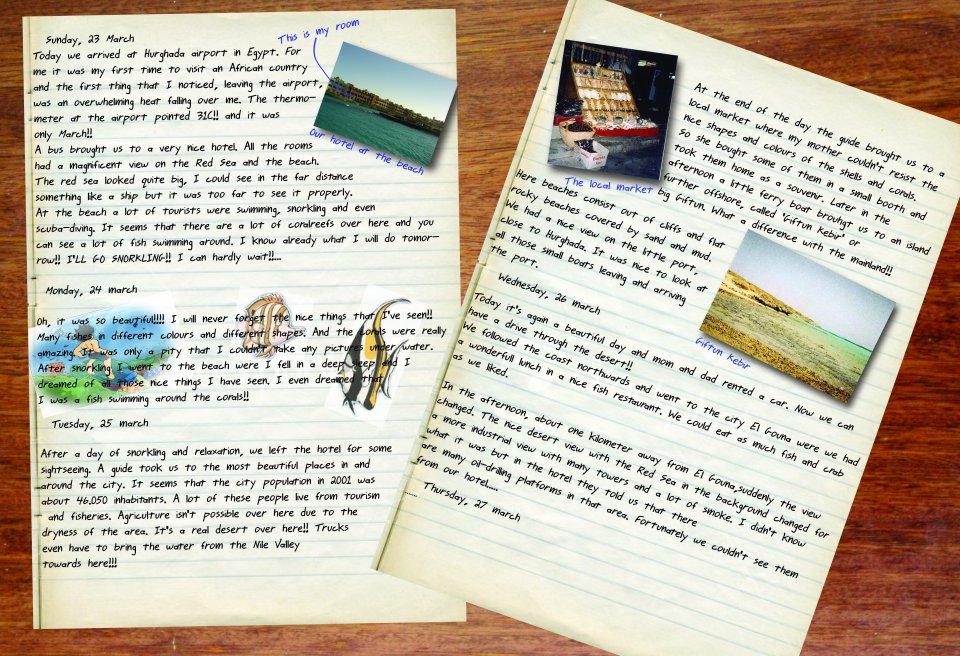Chapter 5. Remote sensing for coral reef mapping
Mapping the risks
Introduction
John is 17 years old. Last summer still evokes some nice memories. For the first time in his life, he went for three weeks on vacation with his parents. The destination was the city of Hurghada in Egypt. On the 5th of July, their plane landed at the airport near Hurghada. From that moment on, he kept a diary, just to keep the memories fresh.
Here you can read some passages from his diary.
Objectives
- Students can reproduce information that is given in a full text.
- Students can make a link between information in text and information on a map.
Materials
- Download the worksheet Mapping the risks (163 MB .rtf file)
- Internet access
Procedure
Here you see a Landsat 7 ETM+ True Color Composite satellite image of the region around Hurghada.

Source: Vanderstraeten, 2007.
- Can you point out on the image where John stayed with his family?
- Where can you find the oil-drilling platforms? Point them out.
- How are the colors in the interior on the image? Can you explain this?
- In the interior, you can see a typical pattern; can you explain what this is?
TIP: take the previous question in consideration!
Combining the individual risk-assessment maps for each threat gives us the following overall risk assessment map for the Hurghada area.

Source: Vanderstraeten, 2007.
- Based on John's diary and the previous satellite image, can you complete the legend?

- Point out: El Gouna, Hurghada
- In the Hurghada area, what is the main influencing factor causing a risk for corals?
- Can you find five other factors in John's diary causing risks for the corals?
- In the risk zone along the coast, some areas don't seem to be at risk (color blue). Can you explain this?

